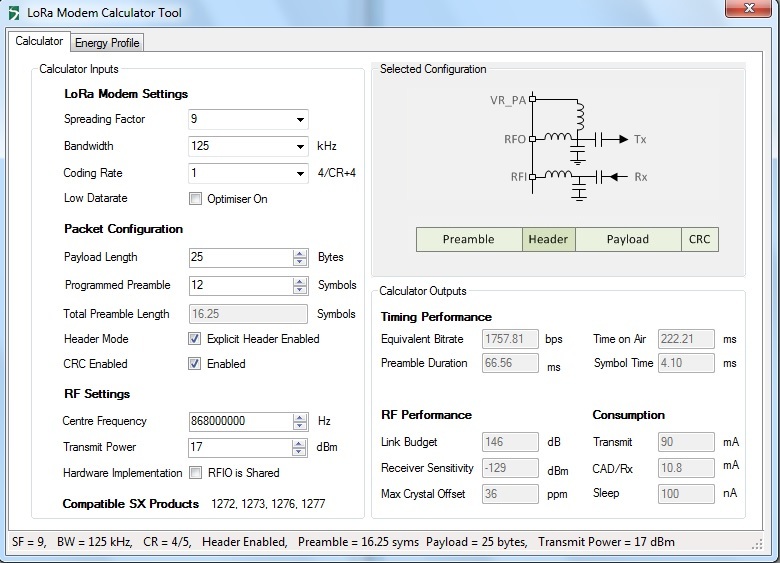I am using the RFM95 module for a project. A problem I have encountered is that immediately switching to Rx mode after a Tx results in failure in transmission of that packet. This seems to work well if I provide a delay of around 500 ms after Tx. Do you know anything about such minimum delay required between Tx-Rx mode switch?
Thank you.
Hi,
LoRa transmission may be pretty long (from few miliseconds to several seconds) depending on parameters, so you need to wait before end of transmission
Hi, Thank you.
The specification I used were 
According to calculations time on air is 222 ms. So this should be the delay between switching from Tx to Rx mode right?
And is similar delay required for switching from Rx to Tx?
Regards,
Adarsh
Header Disabled
Why?
And how did you get to 222 ms? If that’s 25 bytes application payload (plus 13 bytes for the LoRaWAN header, so a total of 38 bytes), then the time-on-air for SF9 is 267 ms. Or, if it’s 25 bytes total, so 12 bytes of application payload, then 206 ms.
Also beware that nodes might have a random delay before they truly start sending? At least, the specifications state, emphasis mine:
2.1 LoRaWAN Classes
…
The transmission slot scheduled by the end-device is based on its own communication needs with a small variation based on a random time basis (ALOHA-type of protocol).
Finally, note that LoRaWAN explicitly defines when to expect a possible downlink (see RECEIVE_DELAY1 and RECEIVE_DELAY2), so listening after 500 ms is too soon for LoRaWAN.
Hello, arjanvanb,
I forgot mention that header was enabled. I got my values based on LoRa calculator: 
I understand that this might vary a little for HopeRF but principally this should be right.
I am not using LoRaWAN stack as of now, but only LoRa transceiver by HopeRF RFM95 so I have to manage the delay between transmission and reception by myself. As I understand now delay is required between Tx and Rx only because LoRa transmitter takes some time (equal to time-on-air based on SF) to send the packet. Is there any other reason apart from this to provide delay to switch from Tx mode to Rx mode?
Also if that is the case, is there any requirement to provide a minimum delay between switching from Rx and Tx too?
Thank you.
